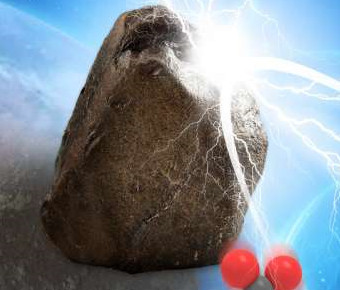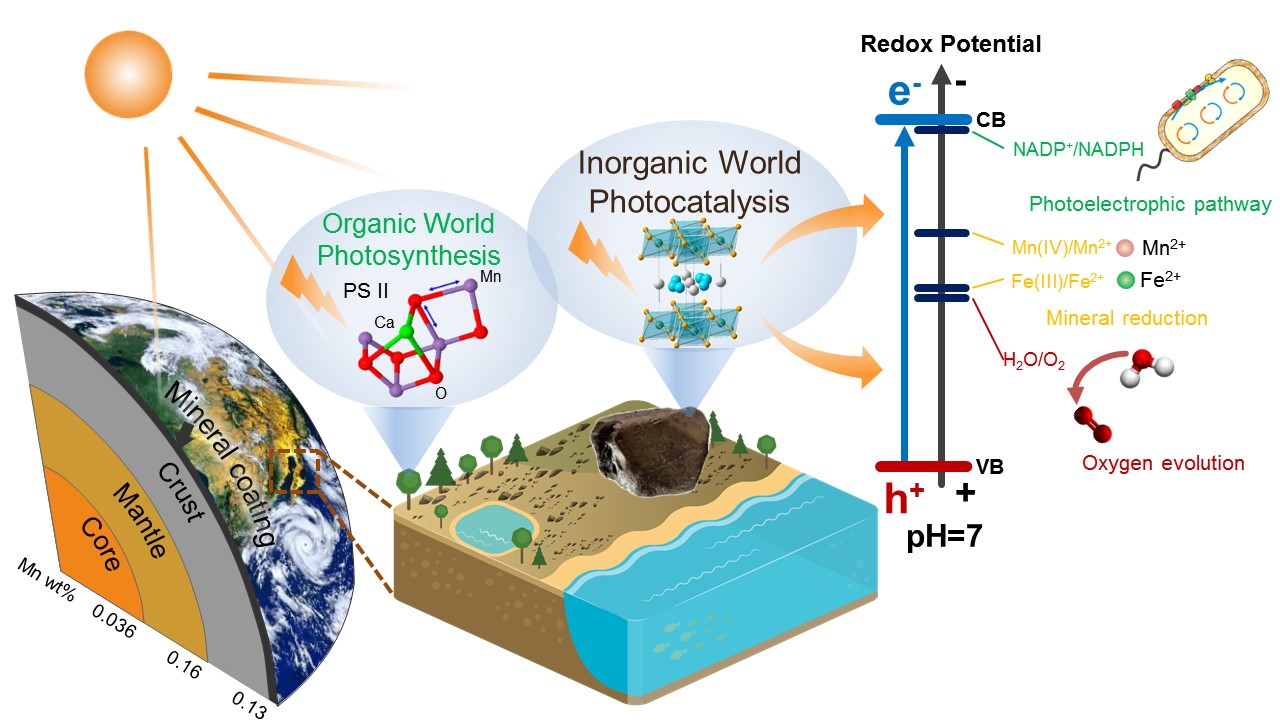Researchers’ latest discovery in PKU: photoelectric conversion by widespread mineral coatings
Apr 24, 2019
Peking University, April 24, 2019: A team of Peking University researchers, including Lu Anhuai, Li Yan and Ding Hongrui in School of Earth and Space Sciences, Liu Kaihui in School of Physics, and their collaborators of Michael F. Hochella Jr. in Virginia Institute of Technology et al., have reported their newly discovery in Proceedings of the National Academy of Sciences, that photoelectric conversion naturally occurred on Earth’s surface via widespread Fe- and Mn-mineral coatings (https://doi.org/10.1073/pnas.1902473116).
It is well known that photosynthesis of plants, algae and phototrophic microorganisms absorbs carbon dioxide, converts solar energy into biochemical energy, and releases the oxygen on which we live, providing energy directly or indirectly for many other organisms in nature. Unexpectedly, however, in this new effort, they have found evidence of inorganic minerals that can also utilize and convert solar energy when directly exposed to the solar light.
Lu Anhuai et al. performed detailed physical and chemical analyses of naturally-occurring varnishes from desert rock surfaces in northern China, as well as surface coatings from karst and red soil particles in southern China. Detailed research works have revealed these coatings consist mainly of iron (Fe) and manganese (Mn) (oxyhydr) oxides, and are particularly enriched in Mn relative to the underlying rock. In situ photoelectric measurements in rock varnish samples indicate the detectable photocurrents are only observed in the region of Fe- or Mn-rich mineral coatings, but not in the rock substrate. The currents are sensitive and stable under steady illumination, but rapidly cease when the light is blocked. Irradiation-dependent photocurrents are also observed in the mineral coatings from the outermost surface of karst rocks and red soil. The mineral coatings behave as natural photoelectric generators and show long-term stability.
The authors attribute the photo-to-electric conversion of these coatings to naturally occurring Fe and Mn (oxyhydr) oxide minerals, such as birnessite, hematite, and goethite, which are solar light-responsive semiconducting minerals. The energy conversion mechanism of mineral coatings is similar to that of photosynthesis. In principle, charge separation in the reaction center of photosynthesis is driven by natural solar energy, and then electron transfer is carried out by electron carriers; while the mineral coatings are capable to generate photoelectron-hole pairs under solar energy excitation, and when the photoholes are captured by reducing materials in the natural environment, the photoelectrons are separated and can proceed the following electron transfer process, that achieves the conversion of solar to chemical energy. More interestingly, Fe and Mn are indispensable to the photochemical reactions of both the photosynthetic system and the mineral coatings. In photosynthesis, water splitting and oxygen release occur on the protein complexes rich in Mn, while on the rock surface under simulated sunlight, the regions with significant photocurrent signals coincide with the regions rich in elements Mn and Fe.
Figure Schematic model showing the topmost layer of Earth’s semiconducting mineral coating together with PS II for harvesting and transforming solar energy. (cited from Lu et al.’s article in https://doi.org/10.1073/pnas.1902473116)
The solar light response and photocurrent production of widespread semiconducting mineral coatings may play a role similar, in part, to photosynthetic systems and thus provide a distinctive driving force for redox (bio)geochemistry on Earth’s surfaces. This discovery broadens our new understanding of natural solar energy utilization, provides a new perspective for the study of the origin of photosynthesis system and artificial photosynthesis, and also has reference significance for the utilization and conversion of solar energy by inorganic mineral coatings to modify the surface environment of terrestrial planets in the solar system.
Edited by: Huang Weijian
Photo credit to: Lu Anhuai
Source: Office of Scientific Research

